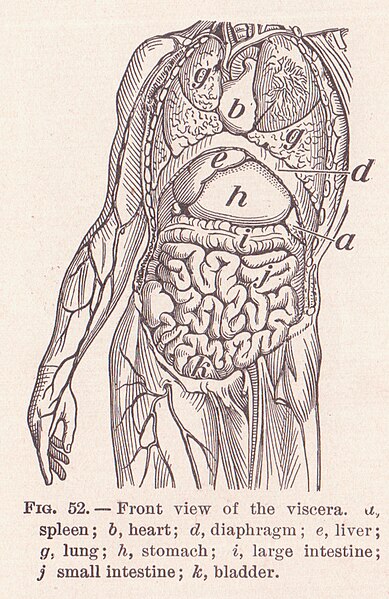Epithelium or epithelial tissue is a thin, continuous, protective layer of compactly packed cells with little extracellular matrix. Epithelial tissues line the outer surfaces of organs and blood vessels throughout the body, as well as the inner surfaces of cavities in many internal organs. An example is the epidermis, the outermost layer of the skin. Epithelial tissue is one of the four basic types of animal tissue, along with connective tissue, muscle tissue and nervous tissue. These tissues also lack blood or lymph supply. The tissue is supplied by nerves.
Types of epithelium
Summary showing different epithelial cells/tissues and their characteristics.
Different characteristics of glands of the body
Epithelial cell infected with Chlamydia pneumoniae
In a multicellular organism, an organ is a collection of tissues joined in a structural unit to serve a common function. In the hierarchy of life, an organ lies between tissue and an organ system. Tissues are formed from same type cells to act together in a function. Tissues of different types combine to form an organ which has a specific function. The intestinal wall for example is formed by epithelial tissue and smooth muscle tissue. Two or more organs working together in the execution of a specific body function form an organ system, also called a biological system or body system.
The liver and gallbladder of a sheep
Relationship of major animal lineages with indication of how long ago these animals shared a common ancestor. On the left, important organs are shown, which allows us to determine how long ago these may have evolved.
Strobilus of Equisetum telmateia
Human viscera








